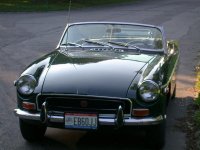JoeV
Thin Air, Bright Sun
Regarding "DOF," I will leave it to the physicists in the audience to explain the difference between Depth of Focus and Depth of Field. 😉
I think the most valuable concept yet presented in this thread is that lens markings are based on assumptions, and in general are but guidelines.
I think what many are in search of is the Magic Formula that will produce the Perfect Image, without further intervention on the part of the photographer; as if art could be distilled down to some mechanical process, starting with pushing a button and ending with Fine Art spewing forth from one's printer, without trial and error and labor the intermediary. Yes, I too would like for the process of image creation to be as goof-proof as possible, but one must understand the limits of the process through experience just as much through mathematical calculation.
~Joe
I think the most valuable concept yet presented in this thread is that lens markings are based on assumptions, and in general are but guidelines.
I think what many are in search of is the Magic Formula that will produce the Perfect Image, without further intervention on the part of the photographer; as if art could be distilled down to some mechanical process, starting with pushing a button and ending with Fine Art spewing forth from one's printer, without trial and error and labor the intermediary. Yes, I too would like for the process of image creation to be as goof-proof as possible, but one must understand the limits of the process through experience just as much through mathematical calculation.
~Joe


